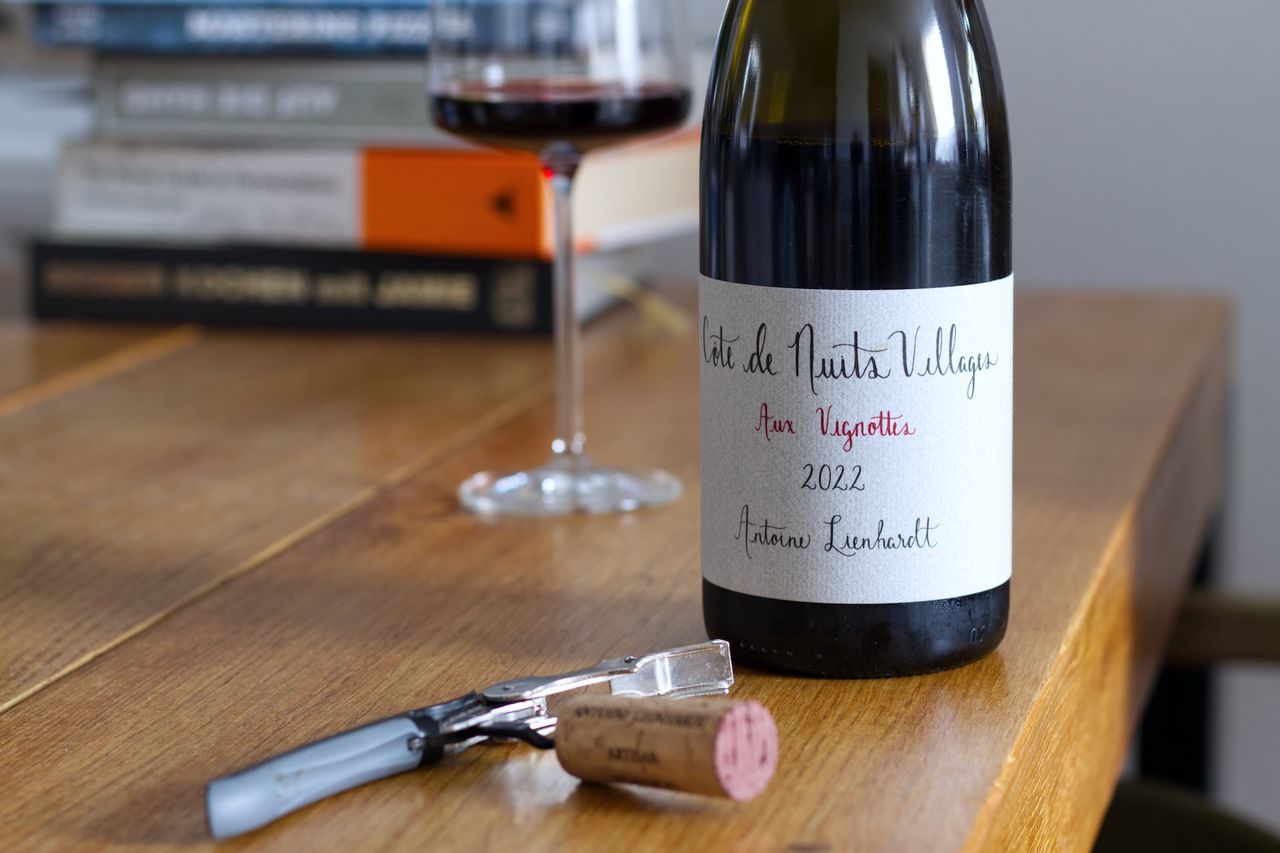Antoine Lienhardt - Aux Vignottes 2022
We're slowly coming to the end of our little round of Burgundy wines. This week, we're drinking a 2022 Côte de Nuits Villages Aux Vignottes from Antoine Lienhardt.

After eight weeks of drinking Pinot Noir and Chardonnay, first from Baden and then actually from Burgundy, it’s about time to wrap up this round and bring in some variety. However, I still have one last arrow in my quiver, but more on that next week. Today, I’m just happy that we’re finally tasting wines from a broader area than just a stone’s throw apart. The Côte de Nuits Villages appellation gathers vineyards from several small villages over about 160 hectares, which are quite spread out across the Côte de Nuits, and it ranks kind of low in the hierarchy of appellation classifications. The parcel Vignottes lies between the villages of Comblanchien and Premeaux, towards the southern part of the region. Just cross the road, and you could label the wine as Clos de la Maréchale Premier Cru and likely charge more for it. Such is Burgundy. In Comblanchien, you’ll also find the winery of Antoine Lienhardt, who is a fourth-generation winemaker. One of his predecessors, Maurice Guyot, was one of the first in the region to bottle and market their own wine, a pioneering move before he retired in 1992. It’s amusing, especially living here in the cooperative-heavy Württemberg, to think that despite such big names on the label today, the idea of bottling their own wine only started a generation ago. Antoine took over the winery in 2011, and his sister Héloïse joined him in 2017. The estate is now Ecocert certified and farms its vineyards organically. The grapes are hand-harvested and fermented with stems and all.
From the glass comes a mix of dark fruit and the scent of band-aids. There’s a hint of baby cream, Amaro, and healthy fruit and vegetable juice from the health food store. It’s quite compact, and the more you sniff, the less you seem to get through. In the first few minutes, it becomes more closed off. The fruit darkens, almost turning black. I find myself thinking that, just by the smell, I wouldn’t have placed this wine as a Pinot Noir and take my first sip. Then, there’s a fine cherry, acidity, juiciness, and a lot of freshness that is completely different from what the nose had suggested. But, as so often happens, when the wine also reaches your olfactory cells from behind, the smell changes, opens up, and suddenly everything fits together quite well.
Day two is different, but still unusual. There’s a bit of cotton candy and a fruit that slips through your fingers, evading any sense of categorization. We sit across from each other, tossing flavors around, certain that we’ve smelled this before. But no one confidently calls out any specific fruit or flavour. And so, we sit there drinking, having quite a bit of fun without needing a precise label. There’s a bit of jelly-like fruit, some dark blossoms, and fresh wood that becomes woodier as the evening progresses. While drinking, a good amount of tannin has positioned itself behind the acidity, building more and more texture throughout the evening until it really grips the tongue by the end of the glass, only to be washed away by a mouthful of cold fruit tea with the next sip. I’m curious about what’s next, so I put the bottle back in the fridge.
The change on the third day is even more pronounced. Now there’s cherry, blueberry, and lightly decaying wood, paired with a slightly ethereal aroma. The acidity reminds me of the sensation of having a handful of fresh berries in your mouth. Unfortunately, I like the tannin the least on the third day. It doesn’t seem to fully integrate and slightly mars the wine’s overall impression right at the last moment before it fades away. Nonetheless, it’s still good. But with a small caveat. In the context of the wines before it, including those from Baden, this is the weakest wine of the series. Still good, but with that small but involved. Maybe it’s too young, maybe the development that occurred by day three would have happened in the cellar, and in two or three years, I’d have a completely different impression. Who knows. That’s just how it is with wine drinking. Everything is a snapshot in time, and sometimes, the better is the enemy of the good.